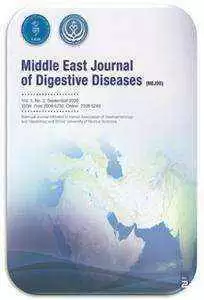
Celiac.com 04/08/2011 - A medical research team recently conducted an epidemiological review of celiac disease in Iran. The team included M. Rostami Nejad, K. Rostami, M. H. Emami, M. R. Zali, and R. Malekzadeh.
They are associated variously with the Research Institute for Gastroenterology and Liver Diseases at Shahid Beheshti University of Medical Science, with the Digestive Disease Research Center,Tehran University of Medical Sciences, both in Tehran, Iran, with the Poursina Hakim Research Institute (PHRI), Isfahan University of MedicalSciences (IUMS), Isfahan, Iran, and with the School of Medicine, University of Birmingham, United Kingdom.
Celiac.com Sponsor (A12):
Celiac disease has been traditionally believed to be a chronic enteropathy, almost exclusively affecting people of European origin. The use of new, simple, very sensitive and specific serological tests has revealed shown that celiac disease is as common in Middle Eastern countries as in Europe, Australia and New Zealand, where wheat is a major dietary staple.
Celiac disease was presumed to be rare in Iran because of low awareness and a low index of suspicion. However new epidemiological data show that celiac disease is a common disorder in Middle Eastern countries, particularly Iran.
In fact, studies have shown Iran to have high rates of celiac disease, in both the general population and the at-risk groups, i.e. patients with type 1 diabetes or irritable bowel syndrome (IBS).
In developing countries, doing blood tests on at-risk groups is necessary for early identification of celiac patients.
Clinical studies show that patients in the middle east present with non-specific symptoms or a lack of symptoms as often as in Europe.
Since wheat is a major component of the Iranian diet and exposure to wheat proteins induces some degree of immune tolerance, leading to milder symptoms that may be mistaken with other GI disorders.
Getting patients on a gluten free diet is a major challenge for both patients and clinicians in Iran, mainly because commercial gluten-free products are simply not available.
Since it is possible that there is some variable frequency celiac disease in different parts of Iran, as is the case for India, the study team suggests the need for a more uniformly designed evaluation of celiac disease for the entire country, a mapping of HLA DQ in the same areas, together with a gluten consumption assessment.
Celiac disease rates are quite low in some areas of Iran, such as Shiraz Province, while a summary of the reviewed studies suggests a prevalence of 1% in the remaining areas of Iran, a rate similar to that found in Western European countries.
SOURCE:
Open Original Shared Link






Recommended Comments
There are no comments to display.